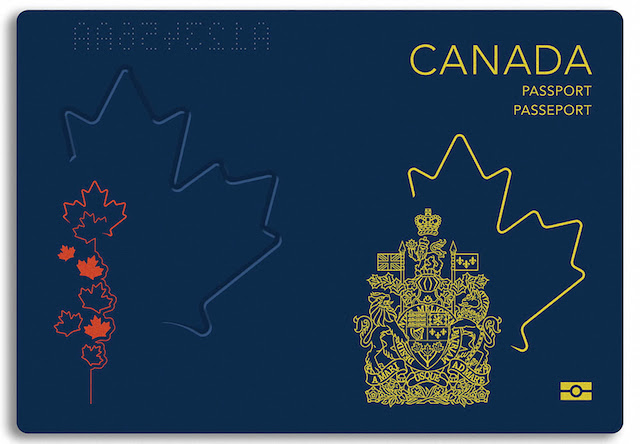Opinion
The repair job at Immigration

|
|
The department’s top bureaucrat answers a critical report, with rare candour
Seven months ago Neil Yeates, a retired former deputy minister of immigration, submitted a report on the organization of the department of Immigration, Refugees and Citizenship Canada to the current deputy minister, Christiane Fox.
Yeates’s 28-page report was blunt, plainspoken, critical but constructive. It said “the current organizational model at IRCC is broken.” At a time of global upheaval and dizzying growth in immigration levels, the department that decides who gets into Canada was no longer “fit for purpose,” he wrote. It was time for “major change.” When? “[T]he advice is to proceed now.”
On Thursday, a copy of Yeates’s report landed in my email inbox.
On Thursday night, Christiane Fox told me she is implementing many of Yeates’s recommendations, and described for me her plans for the department with a level of detail and candour I almost never see in today’s Ottawa.
I’m keeping the paywall off this story because I want it to be widely read. But producing work like this is my full-time job, and I’m able to get stories like this because people understand I’m writing for one of the best audiences in Canadian journalism. If you want to support my full-time work and join that audience, consider subscribing or upgrading to a paid subscription.
Copies of Yeates’s February IRCC Organizational Review Report have been floating around Ottawa because the department began implementing big changes this week. Some of the nearly 13,000 people who work in the department have asked for the rationale behind the changes. Yeates’s 28-page report makes the case succinctly.
Yeates was a top civil servant in Saskatchewan before moving to Ottawa in 2004. He held senior positions in three other departments before becoming deputy minister at Citizenship and Immigration Canada, the department now known as IRCC, where he served from 2009 to his retirement in 2013. That means he was Jason Kenney’s deputy minister for all of Kenney’s time at Immigration, but he was also a Trudeau Foundation mentor if you want to get excited about that instead.
His report’s purpose, he wrote, “is to provide strategic advice to the Deputy Minister on how the department can become a more efficient and effective organization.” After interviewing 36 people inside and outside the department, he decided it was a mess.
‘“[T]he current organizational model at IRCC is broken but is being held together by the hard work and dedication of staff,” he wrote. “At IRCC today department-wide planning is limited and some interviewees suggested it has in fact disappeared completely . There is no multi-year strategic plan, annual plans are not in place consistently across the department and consequently reporting is seen by many as haphazard.”
What the department did have going for it was a decent work environment: “In talking to senior managers at IRCC the culture was universally seen as ‘committed,’ ‘collaborative,’ ‘supportive’ and so on.” The senior managers Yeates interviewed saw this culture as “helping to overcome the shortcomings of the current organizational structure and of the weakness of the governance and management systems.”
The immigration department has always been the main portal between a messy world and an anxious nation. Lately the world had grown messier, Yeates noted, and the demands on the department were starting to hurt. “[T]he operating environment, both nationally and internationally, has grown ever more complex, unstable and frenetic,” he wrote.
In response, “the department has grown exponentially,” from 5,217 staff when Yeates left it in 2013 to12,721 this year, an expansion of 144%. The “Ex complement,” the department’s management cadre, grew from 135 to 227 over the same period, a smaller increase of 68%. That might explain why the department’s managers are so stressed, Yeates speculated. At any rate, the department’s structure was conceived for a much smaller staff and caseload.
To catch up, Yeates proposed big reform in four areas: Organizational Structure, Governance, Management Systems and Culture. He cautioned that tinkering with only one or a couple of those areas wouldn’t have the effect that a “Big Bang,” however difficult, would achieve.
The big problem in Organizational Structure was that the department isn’t organized along business lines: that one of the world’s leading destinations for asylum and humanitarian immigration doesn’t have an assistant deputy minister for asylum, for instance. The obvious challenge was that in a hectic world there will certainly be more crises, like those of recent years. “Should IRCC have a permanent ‘response team’ in place? The short answer is no.” Between crises that team of experienced trouble-shooters would just be twirling their thumbs. Instead Yeates proposed better contingency planning, including lessons learned from other crisis-management departments such as National Defence.
Under Governance, Yeates found a proliferation of over-large committees sitting through endless presentations and not really sure, at the end of each, whether they had decided anything. “Most of the actual decision-making occurs in DMO/ADM bilats,” he wrote, referring to meetings between the Deputy Minister’s office and a given Assistant Deputy Minister.
The section of Yeates’s report that deals with Management Systems reads like a parable of contemporary Ottawa: a “series of periodic crises” that somehow nobody anticipated, “descend[ing] into ‘issues management.’” What’s needed is much better planning and reporting, he wrote. When he was running the department barely a decade ago, every part of the department was reporting on progress against targets every three months. That system has fallen by the wayside. A department that’s obsessed with its “priorities” or with the to-do items in “a minister’s mandate letters” is “inherently limited” and guaranteed to be side-swiped by events intruding from the real world, he wrote.
The upshot of all this tunnel vision was that the department was expecting to “lapse,” or leave unspent, $368 million in projected spending for the year underway, even as passport-related spending was projecting a $238 million deficit.
Yeates’s report closed with the sort of plea that’s traditional in this sort of exercise, essentially pleading not to be ignored. “IRCC is at a crossroads and as Yogi Berra famously quipped ‘when you come to a fork in the road, take it,’” he wrote. Change is hard, but a “substantial majority” of the people he interviewed told him it was overdue.

Neil Yeates and Christiane Fox.
And that’s where the report ends. I had to decide what to do with it. First, always consider the possibility that you’ve been handed a fake report, or the first draft of something that was later amended beyond recognition. I emailed the office of Immigration Minister Marc Miller looking for comment. They handed me off to the civil servants in the department’s communications staff. But I also emailed Christiane Fox, the deputy minister, offering her a chance to comment. This is the sort of chance that people in Ottawa usually don’t touch with a barge pole.
But Fox called me on Thursday night and responded in detail. I asked: was the conversation on the record? She thought out loud for a few seconds, working her way up to a “Yes.” I don’t want to belabour this, but that answer is very rare these days.
The other way you can help me, besides subscribing, is to tell people about the work I’m doing here. Share this story with friends and family, or post it to your social networks. Let people know what we’re building here.
Christiane Fox had been the DM at Indigenous Services for all of 22 months when she was sent to run IRCC in July of 2022. The new job “felt like crisis”: the department was sending weekly updates to an ad hoc committee of ministers whose job was to fix months of chaos in airports and passport offices.
“They felt like they were under duress,” Fox said. “Everyone was exhausted.” New staff were just “tacked on when there was a problem,” including the creation of an entirely new sector for Afghanistan. Fox talked about this with some of the most experienced public servants in town, including Yeates and Richard Dicerni, Fox’s former DM from her days as a young public servant at Industry, who passed away this summer and whose contribution to public life in Canada is hard to measure.
“I kind of said, ‘We’ve got to make some changes. And I don’t want to do it overnight. But I also don’t want to spend two years figuring out what a new model could look like.’” Yeates, whom she didn’t know well but who knew the department’s history, seemed like solid outside counsel.
While Yeates was doing his thing, Fox and the previous immigration minister, Sean Fraser, were consulting — with “business leaders, academics and clients” — about the department’s future. By June of this year, she had a plan, based on Yeates’s report and those consultations. She’s been rolling it out since then, from top managers on down, and on Wednesday, by way of explanation for the changes that are coming, she sent the Yeates report to enough people that I got a copy. A department-wide meeting is scheduled for this coming week.
What’s changing? “The model is now just more of a business-line model,” she said, reflecting Yeates’s first big recommendation.
So there’ll be a stronger crisis-planning sector. In a world that keeps producing humanitarian crises, the goal is to learn lessons for next time from Ukraine, Afghanistan and elsewhere. “Most importantly, we’ll have a group dedicated to thinking about these issues, planning for crisis.” It won’t eliminate the need to “surge,” or quickly add new staff when something flares up. “But in the past, we ended up surging so much that all of our other business lines suffered every time there was a crisis.” The goal now is to get better at anticipating so the department’s regular work doesn’t suffer.
“Asylum and Refugee. There was no Asylum ADM,” she said, reflecting another Yeates critique. “This is probably the thing that causes me the most heartache, in terms of, how are we going to deal with this as a country, globally? What are some of the tools that we have? How do we support the most vulnerable? How do we have a system that is fast and fair? So Asylum and Refugee will now be a sector within the department.”
In addition, there’ll be a sector focused on Economic Immigration and Family. “The business community didn’t really feel like we were actually talking to them about labour shortages, about skills missions, about what is the talent that the country needs.” And a sector on francophone immigration, identifying French-speaking sources of immigration and taking into account the needs of French-speaking newcomers.
“Other sectors remain kind of consistent. Like, we’ve always had a focus on border and security, but we will now have a team that’s really migration integrity, national security, fraud prevention, and looking at case management in that context.”
Fox said she’s working on more of a “client focus” in the department’s work. “When I joined the department I remember, my first few weeks, thinking, ‘Everybody talks about inventory and backlog and process.’ But I didn’t feel clients and people were at the forefront.” This may sound like a semantic difference. But anyone who’s been treated as inventory and backlog can testify to the potential value in any reform that restores a measure of humanity to recipients of government service.
I’ve been arguing for months here that simply acknowledging problems and identifying possible solutions is better communications than the happy-face sloganeering that passes for so much of strategic comms these days. Here, quite by accident, I’d stumbled across somebody who seems to have had similar thoughts. (There’s an irony here, because Fox’s CV includes a long stint as a director of strategic communications in the Privy Council Office.)
“There will be things that will come up,” Fox said, “that may not be as smooth a transition as we thought, or maybe a bit clunky, that we need to rethink. What we’ve told the employees is, it won’t be perfect. We needed to change, we’re going to change, but there’s going to be room for conversation around issues that arise as we go through this process.”
To subscribe to the full Paul Wells experience, upgrade your subscription.
Focal Points
Common Vaccines Linked to 38-50% Increased Risk of Dementia and Alzheimer’s

The single largest vaccine–dementia study ever conducted (n=13.3 million) finds risk intensifies with more doses, remains elevated for a full decade, and is strongest after flu and pneumococcal shots.
The single largest and most rigorous study ever conducted on vaccines and dementia — spanning 13.3 million UK adults — has uncovered a deeply troubling pattern: those who received common adult vaccines faced a significantly higher risk of both dementia and Alzheimer’s disease.
The risk intensifies with more doses, remains elevated for a full decade, and is strongest after influenza and pneumococcal vaccination. With each layer of statistical adjustment, the signal doesn’t fade — it becomes sharper, more consistent, and increasingly difficult to explain away.
And critically, these associations persisted even after adjusting for an unusually wide range of potential confounders, including age, sex, socioeconomic status, BMI, smoking, alcohol-related disorders, hypertension, atrial fibrillation, heart failure, coronary artery disease, stroke/TIA, peripheral vascular disease, diabetes, chronic kidney and liver disease, depression, epilepsy, Parkinson’s disease, cancer, traumatic brain injury, hypothyroidism, osteoporosis, and dozens of medications ranging from NSAIDs and opioids to statins, antiplatelets, immunosuppressants, and antidepressants.
Even after controlling for this extensive list, the elevated risks remained strong and remarkably stable.
Vaccinated Adults Had a 38% Higher Risk of Dementia
The primary adjusted model showed that adults receiving common adult vaccines (influenza, pneumococcal, shingles, tetanus, diphtheria, pertussis) had a:
38% increased risk of developing dementia (OR 1.38)
This alone dismantles the narrative of “vaccines protect the brain,” but the deeper findings are far worse.
Alzheimer’s Disease Risk Is Even Higher — 50% Increased Risk
Buried in the supplemental tables is a more shocking result: when the authors restricted analyses to Alzheimer’s disease specifically, the association grew even stronger.
50% increased risk of Alzheimer’s (Adjusted OR 1.50)
This indicates the effect is not random. The association intensifies for the most devastating subtype of dementia.
Clear Dose–Response Pattern: More Vaccines = Higher Risk
The authors ran multiple dose–response models, and every one of them shows the same pattern:
Dementia (all types)
From eTable 2:
- 1 vaccine dose → Adjusted OR 1.26 (26% higher risk)
- 2–3 doses → Adjusted OR 1.32 (32% higher risk)
- 4–7 doses → Adjusted OR 1.42 (42% higher risk)
- 8–12 doses → Adjusted OR 1.50 (50% higher risk)
- ≥13 doses → Adjusted OR 1.55 (55% higher risk)
Alzheimer’s Disease (AD) Shows the Same—and Even Stronger—Trend
From eTable 7:
- 1 dose → Adjusted OR 1.32 (32% higher risk)
- 2–3 doses → Adjusted OR 1.41 (41% higher risk)
- ≥4 doses → Adjusted OR 1.61 (61% higher risk)
This is one of the most powerful and unmistakable signals in epidemiology.
Time–Response Curve: Risk Peaks Soon After Vaccination and Remains Elevated for Years
Another signal strongly inconsistent with mere bias: a time-response relationship.
The highest dementia risk occurs 2–4.9 years after vaccination (Adjusted OR 1.56). The risk then slowly attenuates but never returns to baseline, remaining elevated across all time windows.
After 12.5 years, the risk is still meaningfully elevated (Adjusted OR 1.28) — a persistence incompatible with short-term “detection bias” and suggestive of a long-lasting biological impact.
This pattern is what you expect from a biological trigger with long-latency neuroinflammatory or neurodegenerative consequences.
Even After a 10-Year Lag, the Increased Risk Does Not Disappear
When the authors apply a long 10-year lag — meant to eliminate early detection bias — the elevated risk persists:
- Dementia: OR 1.20
- Alzheimer’s: OR 1.26
If this were simply “people who see doctors more often get diagnosed earlier,” the association should disappear under long lag correction.
Influenza and Pneumococcal Vaccines Drive the Signal
Two vaccines show particularly strong associations:
Influenza vaccine
- Dementia: OR 1.39 → 39% higher risk
- Alzheimer’s: OR 1.49 → 49% higher risk
Pneumococcal vaccine
- Dementia: OR 1.12 → 12% higher risk
- Alzheimer’s: OR 1.15 → 15% higher risk
And again, both exhibit dose–response escalation — the hallmark pattern of a genuine exposure–outcome relationship.
Taken together, the findings across primary, supplemental, dose–response, time–response, stratified, and sensitivity analyses paint the same picture:
• A consistent association between cumulative vaccination and increased dementia risk
• A stronger association for Alzheimer’s than for general dementia
• A dose–response effect — more vaccines, higher risk
• A time–response effect — risk peaks after exposure and persists long-term
• Influenza and pneumococcal vaccines strongly drive the signal
• The association remains after 10-year lag correction and active comparator controls
This is what a robust epidemiologic signal looks like.
In the largest single study ever conducted on vaccines and dementia, common adult vaccinations were associated with a 38% higher risk of dementia and a 50% higher risk of Alzheimer’s disease. The risk increases with more doses, persists for a decade, and is strongest for influenza and pneumococcal vaccines.
Epidemiologist and Foundation Administrator, McCullough Foundation
Support our mission: mcculloughfnd.org
Please consider following both the McCullough Foundation and my personal account on X (formerly Twitter) for further content.
FOCAL POINTS (Courageous Discourse) is a reader-supported publication.
To receive new posts and support my work, consider becoming a free or paid subscriber.
Opinion
The day the ‘King of rock ‘n’ roll saved the Arizona memorial

“As we express our gratitude, we must never forget that the highest appreciation is not to utter words but to live by them.”
— President John F. Kennedy, visiting the Arizona Memorial on June 9, 1963
I was on an Aston Hotels media junket to Hawaii, and I had a morning off.
My wife took our daughter Rica, to spend a day at Waikiki beach, while I headed to Pearl Harbor on a bus.
It was my only chance to see the Arizona Memorial, and I was determined to do so.
A small ferry boat takes you there, and I have to say, it is a silent trip.
Everyone on board, seemed to feel the same weight of the moment.
The memorial is simple, but very impactful, to the say the least.
A list of the names, of the 1,177 sailors who died on Dec. 7, 1941, is posted along a wall.
That’s a lot of sailors, to go down with the ship, folks.
The Japanese attack on Pearl Harbor began at 7:55 that morning. The entire attack took only one hour and 15 minutes.
But the devastation, was immense.
Of the eight U.S. battleships present, all were damaged and four were sunk. All but Arizona were later raised, and six were returned to service during the war.
The Japanese also sank or damaged three cruisers, three destroyers, an anti-aircraft training ship, and a minelayer. More than 180 U.S. aircraft were destroyed.
Only six sailors were rescued from the burning USS Arizona, by a sailor from the nearby repair ship USS Vestal.
There is no evidence of men being trapped alive within the submerged hull of the Arizona after the ship settled on the harbor bottom, unlike on other ships like the USS Oklahoma and USS West Virginia, where trapped sailors were heard tapping on the hull for days.
SCUBA technology did not exist at that time, but at least one rescue was successful.
Civilian yard worker Julio DeCastro led a team that used pneumatic hammers to cut through the hull of the capsized USS Oklahoma and rescued 32 men who had been trapped for hours.
No U.S. aircraft carriers were present at Pearl Harbor during the attack, as USS Enterprise, USS Lexington, and USS Saratoga were all at sea on missions, while the six Japanese carriers that attacked; Akagi, Kaga, Sōryū, Hiryū, Shōkaku, Zuikaku — all returned to Japan safely after the raid, though most were sunk later in the war.
I only remember one moment of that day. A young Japanese woman dropped a garland of flowers, into the water above the wreck.
Like magic, it floated directly over the length of the ship, which is still leaking oil.
A moment of time, I can never forget.
Most people don’t know, that the Airzona Memorial almost didn’t happen.
If not for Elvis Presley.
In the early 1960s, fundraising for the memorial had stalled.
Less than half of the roughly $500,000 needed had been raised, and the project was slipping from view.
After his manager, Colonel Tom Parker, read about the struggle, Elvis organized a benefit concert in Hawaii.
Newly discharged from the U.S. Army and on his way to film Blue Hawaii — the King stepped in to help without hesitation.
With one carefully staged benefit at Pearl Harbor’s Bloch Arena on March 25, 1961, he reignited public interest, raising over US $60,000 (equivalent to millions today) for the stalled fundraising effort, which helped push President John F. Kennedy and Congress to finish the job.
The memorial opened the following year.
Bloch Arena on the Navy base became the venue, and Parker handled the details with a fundraiser’s ruthlessness: tickets would range from $3 to $100, and no complimentary tickets would be issued — not even to admirals or VIPs.
Reports from the time underscore Parker’s insistence that everyone pay, a point that generated headlines and maximized proceeds.
A crowd of about 4,000 packed the hall to see Elvis in his gold lamé jacket deliver a rare live set — one of only a handful of concerts he performed between his Army service and the 1968 “Comeback Special.”
He later admitted forgetting lyrics due to being out of practice but was grateful for the crowd’s noise, which covered his mistakes.
He would visit the memorial in 1965 and place a wreath there, showing his deep respect.
The Arizona, launched in June 1915, measured 608 ft, with a beam of 97 ft. She was fully modernized in 1929, after which she was crewed by 92 officers and 1,639 enlisted men.
A Pennsylvania class battleship, she was the flagship of Battleship Division One at the time.
The final living survivor of the Arizona, Lou Conter, died last year, on April 1, 2024.
At Pearl Harbor, the Arizona was hit by four bombs just after 8 a.m., the final one of these is believed to have gone through the armoured deck and blown up the ship’s forward magazines with devastating effects.
Both the captain of the Arizona, Franklin Van Valkenburgh, and rear admiral Isaac Campbell Kidd, the head of the Battleship Division One were killed on the bridge of the Arizona.
More than two million people visit the memorial each year. It is only accessible by boat and straddles the sunken hull of the Arizona, without touching it.
THE MAKICHUK REPORT is free today.
But if you enjoyed this post, you can tell THE MAKICHUK REPORT that their writing is valuable by pledging a future subscription.
You won’t be charged unless they enable payments.
-

 National2 days ago
National2 days agoMedia bound to pay the price for selling their freedom to (selectively) offend
-

 Bruce Dowbiggin2 days ago
Bruce Dowbiggin2 days agoSometimes An Ingrate Nation Pt. 2: The Great One Makes His Choice
-

 Business1 day ago
Business1 day agoRecent price declines don’t solve Toronto’s housing affordability crisis
-

 MAiD14 hours ago
MAiD14 hours agoFrom Exception to Routine. Why Canada’s State-Assisted Suicide Regime Demands a Human-Rights Review
-

 MAiD2 days ago
MAiD2 days agoHealth Canada report finds euthanasia now accounts for over 5% of deaths nationwide
-

 Daily Caller2 days ago
Daily Caller2 days agoTech Mogul Gives $6 Billion To 25 Million Kids To Boost Trump Investment Accounts
-

 Automotive1 day ago
Automotive1 day agoPower Struggle: Governments start quietly backing away from EV mandates
-

 Energy1 day ago
Energy1 day agoUnceded is uncertain









